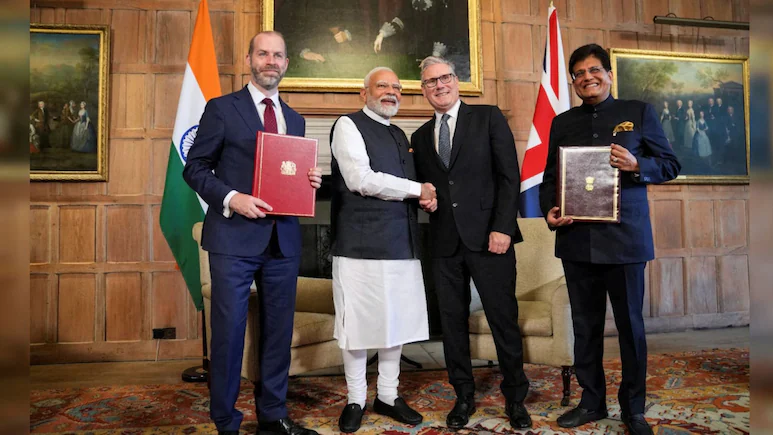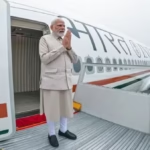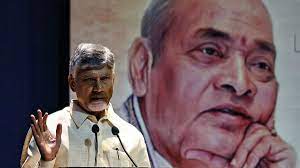India–UK FTA Brings Imported British Cars Closer to Indian Buyers
The signing of the India–UK Free Trade Agreement (FTA) marks a historic milestone, promising not only strategic economic alignment but also tangible benefits in day-to-day consumer markets. At the forefront of these benefits is the automotive sector—particularly imported British cars, which are expected to see significant duty reductions and become considerably more affordable for Indian buyers.
As of 24 July 2025, the newly inked FTA outlines tariff concessions that are scheduled to phase in over the next few years. These concessions apply across several automotive product categories, from luxury sedans and sports utility vehicles (SUVs) to high-performance brands like Rolls-Royce and Bentley. For consumers, this means pricing transformations that could redefine the landscape of imported vehicles in India.
🔧 Why This Matters
British automotive brands have traditionally remained in a niche segment within India, constrained by high import duties—often in excess of 100%. These taxes, while protecting domestic manufacturing and generating revenue, have limited access to brands like Jaguar Land Rover, Mini, Bentley, and McLaren. For luxury enthusiasts, the cost differential was more than a barrier—it was a deterrent.
With the FTA’s tariff reductions, these vehicles are set to become more accessible. This policy move aligns with India’s burgeoning luxury car market, which has shown continuous growth in recent years. It’s the sort of mid-career upgrade story that combines aspiration, economics, and sheer engineering delight.
🧭 Immediate & Long‑Term Implications
Short‑term (First 12 Months):
Buyers could benefit from 10–20% reduction in customs duties on select imports, translating to savings of ₹30–₹50 lakh on models like Range Rover or Jaguar F‑Type. In addition, automobile dealerships may leverage import duty arbitrage for promotional events, raising market awareness and driving deeper consumer engagement.
Medium‑term (2–3 Years):
Broader duty cuts spanning 30–40%, combined with relaxed standards on aftermarket parts, could stimulate UK-based brands to initiate localized assembly or CKD (completely knocked down) operations in India, lowering costs further and expanding service networks.
Long‑term (5+ Years):
A mature India–UK auto trade regime could attract joint ventures, technology transfers, and luxury manufacturing hubs, merging British engineering with Indian affordability. This echoes trends seen elsewhere—like the Canada–US automotive corridor—and presents India with a unique luxury mobility moment.
As India and the United Kingdom formalized the Free Trade Agreement, auto industry observers quickly identified one of the deal’s most practical and high-visibility consequences: the reduced cost of imported British cars. But beneath this consumer-facing shift lies a deeper narrative—one rooted in strategic alignment, industrial positioning, and trade diplomacy.
📊 The Economic Context Behind the FTA
India’s appetite for luxury goods has grown steadily over the past decade, and the automobile sector is among the fastest-growing segments within that trend. According to industry estimates, the Indian luxury car market was valued at over $2.5 billion in 2024, with projections to reach $5 billion by 2030. British automakers, especially heritage-rich brands such as Jaguar, Land Rover, Aston Martin, and Bentley, see India as a critical market for expansion.
However, until now, import tariffs reaching up to 125% acted as a deterrent for middle- and upper-middle-class buyers. Despite growing wealth, many Indian buyers simply could not justify the exorbitant price premiums. The FTA effectively disrupts that barrier, making British cars a viable option not only for the elite but also for aspiring professionals, entrepreneurs, and corporate executives.
This move fits within a broader economic framework. The FTA includes provisions for tariff reduction in a phased manner over the next 5 to 7 years, giving local stakeholders time to adjust. While the automotive clause has gained media attention, it is one component of a far larger pact that covers textiles, pharmaceuticals, legal services, fintech, and data flows.
🏛️ Political and Diplomatic Calculations
On the surface, the India–UK FTA is a trade policy. But at its heart, it’s a geostrategic alignment in a multipolar world.
For the UK, post-Brexit trade strategy has focused on forging bilateral deals with dynamic emerging markets. India, with its massive consumer base and growing economic clout, is a natural partner. For India, the UK remains a gateway to Europe—not just in trade, but in technology, capital, and soft power.
The car industry, particularly high-end British auto manufacturing, carries national prestige. Offering concessions on these exports allows the UK government to demonstrate concrete post-Brexit wins at home, while simultaneously deepening ties with one of the world’s fastest-growing economies.
🏭 Implications for Indian Auto Ecosystem
This agreement will not just benefit British automakers—it could reshape India’s own auto industry.
- Luxury Market Segmentation:
The luxury car segment in India has long been monopolized by German giants such as Mercedes-Benz, BMW, and Audi. British brands, though respected, remained in the shadows. With the FTA in place, British names now have an opportunity to grab significant market share and disrupt this equilibrium. - Boost to Allied Sectors:
Reduced import duties mean more showrooms, expanded service networks, and jobs in sales, after-sales service, and logistics. Ancillary industries like automobile detailing, insurance, spare parts, and pre-owned luxury cars will also benefit from increased volumes. - Encouragement for Local Assembly:
Jaguar Land Rover (owned by Tata Motors) already assembles several models in India. The new FTA could prompt other UK car brands to explore CKD (completely knocked down) or SKD (semi knocked down) operations, thus spurring Make in India initiatives within the premium segment.
📉 Challenges & Criticism
While the FTA brings good news for consumers and exporters, there are valid concerns from Indian carmakers and economic nationalists. Lower duties on imported luxury vehicles could hurt local premium car models trying to establish themselves. Indian carmakers like Mahindra and Tata Motors have invested in their own high-end offerings—XUV700, Harrier, and Safari—but price-conscious buyers may now lean toward foreign imports in similar price bands.
There’s also a concern around trade imbalance. Britain exports high-value cars, while India’s exports to the UK largely include garments, pharmaceuticals, and software services. Policymakers will need to closely monitor how this balance evolves.
The ink on the India–UK FTA has barely dried, yet the ripple effects across the global automotive industry are already visible. With duties set to be slashed, British automakers are preparing to reposition themselves not just as niche players, but as mainstream contenders in the Indian premium and luxury segments.
🏁 British Brands Rev Up for Indian Expansion
The Free Trade Agreement has injected a new sense of urgency into the expansion strategies of British automakers. While some, like Jaguar Land Rover, already have an established footprint in India thanks to Tata Motors’ ownership, others like Bentley, Rolls-Royce, Aston Martin, and Lotus are now re-evaluating their market potential in the subcontinent.
Here’s how the major players are preparing:
🔷 Jaguar Land Rover (JLR)
JLR, already a household name among Indian luxury car buyers, is poised to be the biggest beneficiary of the FTA. With key models such as the Range Rover Evoque, Discovery Sport, and Jaguar F-PACE already being assembled in India, the reduction in customs duties on fully built imports means flagship models like the Range Rover Autobiography and Jaguar I-PACE EV could see substantial price cuts.
Tata Motors is reportedly planning to:
- Expand JLR’s retail footprint in Tier-1 and Tier-2 cities
- Invest in localized content creation and India-specific features
- Launch subscription models for luxury electric vehicles
🔷 Aston Martin
Aston Martin has remained an ultra-niche brand in India, catering only to ultra-high-net-worth individuals. With duties slashed, the brand plans to increase its India allocation of Vantage and DBX models, especially as urban India witnesses a generational shift in wealth.
An official from the brand’s UK headquarters recently noted:
“The FTA has allowed us to reclassify India not just as an emerging market, but as a target market.”
🔷 Rolls-Royce and Bentley
While these marques will continue to operate in an ultra-exclusive segment, even a 10-15% price drop on cars priced at ₹5 crore and above can significantly influence buying behavior in cities like Delhi, Mumbai, Hyderabad, and Bengaluru.
🛍️ Indian Buyers: From Aspiration to Access
The real shift, however, lies not in the supply side, but in consumer sentiment. The idea of owning a British luxury car is no longer confined to industrialists and movie stars. The new Indian consumer—young, affluent, self-made, and experience-driven—is increasingly inclined to upgrade their automotive identity.
📱 Influencer Culture and Auto Aspirations
Social media platforms like Instagram and YouTube have created a new wave of auto influencers who review luxury cars, conduct test drives, and share lifestyle content. Many of these influencers are not traditional journalists, but creators who bridge the gap between aspiration and accessibility.
These voices are now playing a crucial role in shaping preferences:
- “Should I buy a Mercedes GLE or a Range Rover Velar?”
- “Will the Aston Martin Vantage drop under ₹2 crore?”
- “British cars are classier than the Germans—change my mind.”
Such comparisons are now routine, as price parity becomes a real possibility for the first time.
🏦 EMI & Leasing Options
Banks and NBFCs are tailoring financial products around the expected demand surge. Flexible EMI schemes, luxury leasing plans, and zero down payment options are being created for salaried professionals in IT, finance, and entrepreneurship—people who once dreamed of owning a British badge but found the upfront cost prohibitive.
📍 Tier-2 & Tier-3 Cities: The New Frontier
British carmakers, once focused solely on Mumbai and Delhi, are now eyeing expansion into cities like Indore, Lucknow, Bhubaneswar, and Surat. These cities are home to rising incomes, aspirational youth, and first-generation wealth creators.
Market research shows that these cities have:
- Higher conversion rates for premium car test drives
- Better vehicle retention than metros
- Lower acquisition costs for dealership operations
Expect showroom launches, mobile luxury car exhibitions, and concierge test drive services to become common in these locations over the next 12–18 months.
As British automotive giants gear up to deepen their presence in India, the implications of the India–UK FTA extend far beyond vehicle pricing. This transformation is intricately linked to changes in India’s urban landscape, its evolving green mobility policies, and a growing global consensus that India is no longer just a manufacturing base—but an end-consumer market of consequence.
🏙️ Urban India: Reimagining the Auto Environment
India’s urban centers are undergoing rapid transformation. With smart cities, widened expressways, and digital mapping infrastructure becoming more common, the context for driving luxury cars is changing as well. Owning a luxury vehicle is no longer a logistical challenge in cities like Pune, Ahmedabad, Kochi, and Chandigarh.
🛣️ Road Networks & Expressways
New expressway corridors such as:
- Mumbai–Nagpur Samruddhi Mahamarg
- Delhi–Meerut Expressway
- Bangalore–Mysore Expressway
have redefined what intercity travel looks like. These roads offer a more European-style driving experience, and naturally, they’re a magnet for premium car owners.
For a buyer looking at a Jaguar XF or a Bentley Continental, the promise is no longer just the badge—it’s the experience of seamless, smooth, and high-speed travel.
🅿️ Parking, Automation & Valet Systems
Luxury residential developments and commercial complexes are now offering:
- Robotic parking bays
- EV-compatible private garages
- AI-powered valet systems
This physical shift in infrastructure is vital. It resolves one of the biggest consumer hesitations—“Where will I park a ₹2 crore car?”
⚡ Green is the New Gold: EV Revolution Aligns with Luxury
One of the key provisions of the India–UK FTA includes reduced tariffs on British electric vehicles (EVs), and this has major consequences.
🔌 Jaguar I-PACE, Mini Electric, and Lotus Emira EV
These models stand to benefit most from the FTA, and their appeal is twofold:
- Performance with prestige
- Luxury that aligns with sustainability goals
EV incentives offered by central and state governments (FAME II, road tax waivers, EV-only parking spots) are dovetailing neatly with the surge in interest for high-end electric mobility.
Cities like Bangalore and Hyderabad—already EV trendsetters—could become launchpads for British luxury EVs that offer range, acceleration, and brand value in one package.
🌿 Climate Policy, CSR & Brand Image
India’s regulatory shift toward decarbonization has also influenced consumer psychology. Wealthy consumers—especially Gen Z and millennial business leaders—are now choosing luxury brands that reflect their values.
British automakers have begun embedding eco-conscious messaging into their campaigns. For example:
- Bentley’s “Beyond100” strategy, where the brand aims to be carbon-neutral by 2030
- Jaguar’s full EV transition announced for 2025
- Rolls-Royce’s launch of the all-electric Spectre, now eligible for lower duties in India
As these messages resonate, luxury auto purchases are increasingly framed as “responsible indulgence.”
🇮🇳 India: From Market to Global Luxury Benchmark
Traditionally, India was seen as a price-sensitive automotive market, but post-pandemic, this perception is changing. A combination of:
- Exploding startup wealth
- Rising dual-income households
- Global exposure via OTT, social media, and education
- Status signaling via vehicles, not just homes
has repositioned India on the global auto strategy map.
British brands are no longer here to test the waters—they’re here to build empires. The India–UK FTA has simply acted as the accelerant.
📈 Investor & Policy Confidence
International investors are also taking note. Dealership chains, parts suppliers, luxury service providers, and after-sales brands are eyeing India as a high-margin growth frontier.
At the same time, Indian policymakers—especially in the commerce and finance ministries—view the India–UK FTA as a blueprint for future bilateral deals that blend diplomacy with economic growth.
The celebratory headlines may emphasize luxury cars and economic opportunity, but the real story lies in the fine print—the thousands of clauses, sub-sections, and technical frameworks that form the India–UK Free Trade Agreement. Behind every lower price tag on a Jaguar, Mini, or Bentley lies a sophisticated matrix of legal architecture, economic strategy, and geopolitical calibration.
📜 The Structure of the Agreement: Chapters and Coverage
The FTA is organized into 26 chapters, each outlining specific sectors and regulatory themes. These include:
- Trade in Goods
- Rules of Origin
- Customs Procedures and Trade Facilitation
- Technical Barriers to Trade
- Sanitary and Phytosanitary Measures
- Trade in Services
- Investment Promotion and Protection
- Digital Trade
- Intellectual Property Rights (IPR)
- Government Procurement
- Dispute Settlement Mechanism
The automotive sector—specifically import of British-manufactured vehicles—is primarily governed by Chapters 1, 2, and 3, which focus on tariff reduction, origin validation, and customs facilitation.
💸 Tariff Reductions: What Exactly Got Cheaper?
Before the FTA, fully imported luxury cars from the UK were subject to:
- Basic Customs Duty (BCD): 60–100% depending on engine capacity
- Social Welfare Surcharge: 10% of BCD
- GST Compensation Cess: Additional 20–22% for high-end vehicles
With the FTA:
- Basic Customs Duty has been cut by 50% in a phased manner over 5 years for fully assembled vehicles (CBUs).
- For Completely Knocked Down (CKD) kits, the duty is slashed to as low as 15%, encouraging local assembly.
- EVs under $70,000 (₹58 lakh) benefit from immediate zero-duty access if they meet localization targets within 3 years.
This creates an incentive-rich pathway for British manufacturers to deepen their footprint without needing to set up a full-scale factory right away.
🧾 Rules of Origin: Guarding Against Third-Party Loopholes
A crucial part of any FTA is ensuring that only genuine producers benefit. Hence, “Rules of Origin” clauses are designed to prevent countries like China or the U.S. from routing their products through the UK to gain unfair access to Indian markets.
For British cars to qualify for tariff benefits under the FTA:
- At least 40% of value addition must occur in the UK
- Final assembly must be completed within UK jurisdiction
- The product must carry a UK-specific Harmonized System (HS) code for customs validation
This ensures authenticity and trade integrity while supporting UK-based jobs and value chains.
🛃 Customs Simplification: Speed Meets Precision
A recurring complaint in international trade is the opacity and slowness of customs procedures. The FTA addresses this directly through:
- Single Window Clearance Systems
- AI-driven cargo inspection protocols
- Digitally signed certificates of origin
- Pre-arrival document vetting
For car brands like Aston Martin or Land Rover, this means less time on port clearance, and for buyers, this translates to faster delivery and fewer logistical delays.
🧩 Compatibility With WTO & Other Agreements
Despite its bilateral nature, the FTA is WTO-compliant. This ensures:
- No violation of Most Favoured Nation (MFN) principles
- Environmental and labor clauses mirror those in EU FTAs
- Transparency standards meet global norms
This compliance gives the FTA global legitimacy, encouraging broader trade confidence and legal defensibility in the event of international disputes.
🔁 Dispute Settlement & Safeguards
The FTA provides a two-tier dispute resolution mechanism:
- Joint Committee Mediation: First attempt via bilateral negotiation
- Neutral Arbitration Panel: If talks fail, a third-party adjudicator steps in
Also included are “snapback” safeguards—temporary tariff reversals in case of:
- Sudden import surges
- Environmental or safety violations
- Geo-political tensions
This protects Indian industry while allowing openness to thrive.
📈 Monitoring, Review & Updates
The agreement isn’t static—it includes biannual review mechanisms. This allows for:
- New EV categories to be added
- Mid-course correction of thresholds
- Dynamic alignment with future UK-EU agreements
India can also renegotiate clauses if British car imports hurt domestic manufacturers disproportionately.
🔍 Looking Ahead: The Legal Template for Future FTAs?
Analysts believe the India–UK FTA might serve as a template for future FTAs, especially with:
- The European Union (EU)
- Australia and Canada
- Regional pacts like the Comprehensive and Progressive Agreement for Trans-Pacific Partnership (CPTPP)
Its success could redefine how India integrates with global luxury and industrial markets while protecting its local ecosystem.
Also Read : China-EU Summit in Beijing Highlights Deepening Tensions Over Trade and Global Influence








